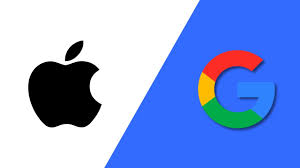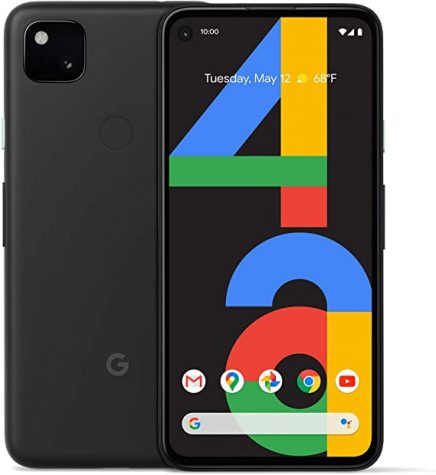Midrange Phone Battle

The Battle over the Midrange phone marketplace: Is it worth the price? 
Flagship phones dominate the phone market; the phone that companies release that is generally pricier and has more features/ upgrades over previous models, such as the Galaxy Note 20 or iPhone 11 Pro.
In today’s world, we face a problem where flagship smartphones have reached high prices, ranging from $729 to $2000.
Customers used to say that Apple sold expensive phones, but now even companies customers viewed as a good value for the price, like One Plus, charges $999!
Companies soon recognized that if they wanted to hold more of the marketplace and bring in more customers of different demographics, they needed to appeal to a broader audience by releasing a mid-tier phone.
These lower-spec phones invite lower prices to compete with other brands; some brands focus just on mid-range phones, but today we will be focusing on the pros and cons of two flagship-tier brands that make midrange smartphones.
IPhone SE (2020). As with all of Apple’s “SE” products, Apple applied its formula of old shell + new internals = lower price. The iPhone SE uses the iPhone 8 aluminum shell, with only a 4.7-inch retina display.
On paper, it sounds like a disaster; in 2020, none of Apple’s phones displayed a home button, let alone a tiny screen and battery. To make it worth it, Apple used the A13 Bionic chipset in the iPhone 11 lineup and outfitted it in the iPhone 8 shell. The result is an efficient iPhone with a performance boost.
I myself have the iPhone 8, and when I bought it, the price was $799. Now, the SE is available for $399, and is even better. If you put it that way, it is a steal.
The jump in transistors goes from 4,300,000,000 to 8,500,000,000! In the AnTuTu test, the A13 Bionic performed nearly double!
Now, the cons.
An iPhone 8 body involves the same small battery. The SE has an 1821 mAh compared to 3969 mAh in the iPhone 11. Now numbers are always skewed with iPhones. For example, the 11 Pro even has a smaller battery than many flagships with 5000 mAh batteries, and still lasts longer in tests.
Apple batteries are more efficient since it runs on Apple silicon. The same thing with ram management — on paper, the iPhone SE should perform less than others with more ram, but it performs on the level with phones with 4x the ram.
The main problem with the SE is the display size. It is tiny for 2020, and not OLED. The camera module is good and can shoot 4k at 60fps, but nothing revolutionary.
Google Pixel 4a, one of SE’s biggest competitors, is priced at $350, and it has a bigger 3140 maH battery, better display, and image rendering software. Google has a significant advantage when it comes to the camera. The Pixel 4a in no way has an excellent camera. It sports a single 12.2 MP camera. But what Google can do with this single-camera module is impressive; it can process images better.

I’ve seen the SE match most of the camera performance, but Pixel 4a is better in low-light, somewhere the SE falls short.
On the Pixel, you get more detailed low-light images using image rendering software. Pixel also includes astrophotography mode, not for everyone, but a bonus.
For example, portrait shots are a bit better along the edges of the face on Pixel; it better detects the face than Apple’s SE. Google is a substantial software head, so there’s no surprise.

SuperSaf, a tech YouTuber, says that the Pixel’s front-facing selfie camera has better dynamic range, but the iPhone’s is sharper.
It comes down to personal preference; the Pixel sometimes uses too much software and ruins the photo, but the iPhone has more natural shots with better selfie portrait shots. Again, it all depends on preference.
Slow-motion wise, iPhone SE also has the advantage.
The cons of both phones come down to little things—some of this matters more for some than others. The Pixel has a headphone jack, but doesn’t have wireless charging or waterproofing like the iPhone. The Pixel is made with plastic instead of the more premium aluminum on the iPhone; the iPhone is more costly and has that smaller display.
Since Apple didn’t make a brand-new phone, instead remade an old phone, the Google pixel wins when it comes to battery size and display quality- they didn’t use a 3-year-old phone.
However, the performance of the iPhone SE A13 bionic chip demolishes the Pixel. In benchmark results, on the multi-core test, the Pixel scored 1,647, and the SE got 3,226!
A trial ran where the phones had to transcode a 4K video to 1080p in Adobe Premiere Rush, and the Pixel took 2 minutes and 27 seconds, but the SE only needed 47 seconds.
The iPhone also has the Apple ecosystem, another con of the Pixel. The iPhone can Airplay to an Apple TV, stream music to a Home Pod, track fitness and music streaming on the Apple Watch, connect Airpods for headphones, and many other subscriptions.
The truth is: there is no clear-cut winner.
If you like Apple software and performance, go there. If you want a more prominent display and value, maybe go with Pixel. Midrange smartphones are very close when you compare them; each company cuts costs in some ways, using the same shell, using plastic, or fewer performance capabilities. Picking the phone depends on what matters to you, so take the time to list important things that a phone should have for you.
Sources: General iPhone SE information:
https://www.apple.com/iphone-se/
General Google Pixel 4a information:
https://store.google.com/us/product/pixel_4a_specs
Geekbench 5 test for multi-core results Tom’s Guide for general information on display: https://www.tomsguide.com/news/google-pixel-4a-vs-iphone-se-which-phone-wins
SuperSaf Youtube Video for camera comparisons:


